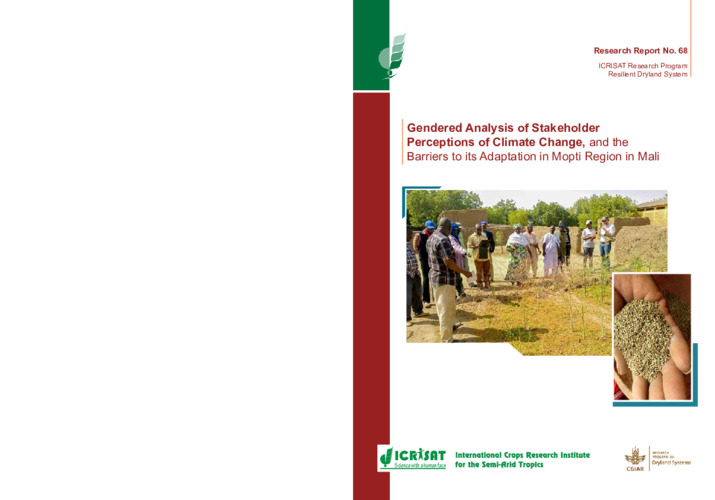Gendered Analysis of Stakeholder Perceptions of Climate Change, and the Barriers to its Adaptation in Mopti Region in Mali
Abstract
The current study presents the farmer and community perceptions of the causes and effects of climate change, the barriers to adoption
of the resilient practices, and the present level of practices adoption in Mopti region in Mali, paying special attention to the gender of
household head and farming systems in the region. The study results show that the majority of farmers perceive changes in climate in
the past 1020
years and that femaleheaded
household in the region are more vulnerable to climate change. Strategies to adapt to
climate change are diversified, but as expected, the proportion of adopting households is lower among the femaleheaded
households
than their male counterparts. The most commonly cited constraints to climate resilient practices adoption are low agricultural
productivity, declining soil fertility and poor seed quality. However, female headed households have to withstand specific barriers
including lack of finances, labor shortages and lack of access to land. Adoption of adaptation technologies was also assessed in various
farming systems. The more diversified a farmer’s system is, the more climate resilient it is. Farmers’ reports that the most important
adaptation methods influencing positively crop yield are mixed farming, irrigation, fertilizers and improved seed varieties. Crop yields,
livestock units owned and per capita income significantly increase through technology diversification, but no clear relationship was
observed with respect to food security indicators. In summary, the farming systems in the area are diversified but in order to have a
more adaptive and resilient system, there is a need to design and implement inclusive locally adapted strategies promoting mixed
farming and crop diversification, including use of improved crop varieties and soil fertility management. The lack of labor and finance,
and lack of access to land and to adapted livestock breeds is also an important barrier to climate resilient strategies, in particular for
female farmers. There is a need to implement innovative and inclusive credit schemes to increase farmers’ liquidity and capacity to
invest in climate change adaptation. Increased adoption of climate resilient practices can also be enhanced by integrating climate
change and agrometeorological
forecasts in the current extension and advisory services. Finally, improving local nutritional skills
through enhanced diets could increase climate resilience by augmenting food security

